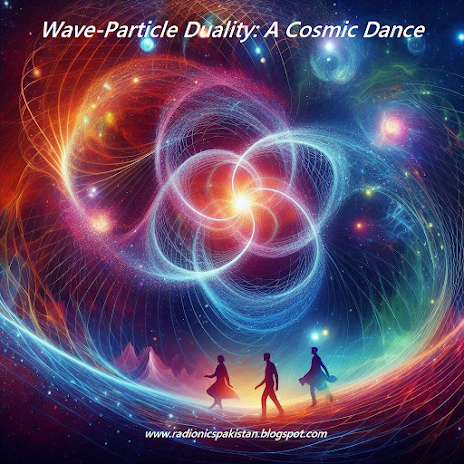Wave-Particle Duality: A Cosmic Dance
- Electromagnetic
Waves and Photons:
- Electromagnetic
waves, including visible light, radio waves, and X-rays, are composed of
oscillating electric and magnetic fields. These waves propagate through
space.
- When
we think of light as a wave, it exhibits properties like interference and
diffraction. For example, when light passes through a narrow slit, it
creates an interference pattern.
- However,
when we zoom in to the smallest energy packets of light—called photons—we
encounter a particle-like behavior. Photons carry discrete amounts of
energy and can interact with matter as individual entities.
- The
Photoelectric Effect:
- The
photoelectric effect provides a classic example of wave-particle duality.
When light (composed of photons) strikes a metal surface, it can liberate
electrons from the metal.
- If
we increase the intensity (brightness) of the light, more electrons are
emitted. This behavior aligns with the particle nature of photons.
- However,
the photoelectric effect also reveals a wave-like aspect: The energy of
each photon determines the kinetic energy of the emitted electrons.
Higher-frequency (shorter-wavelength) light releases more energetic
electrons.
- Electron
Microscopy:
- In
electron microscopy, we use accelerated electrons as “probes” to study
tiny structures at the atomic and molecular level.
- Electrons
exhibit wave-like behavior when passing through crystalline materials.
They create diffraction patterns similar to those produced by X-rays.
- This
duality allows us to visualize intricate details of materials, revealing
their atomic arrangements.
- Quantum
Mechanics and Uncertainty:
- Quantum
mechanics, developed in the early 20th century, formalizes wave-particle
duality. It describes particles using wavefunctions, which represent
probabilities.
- Heisenberg’s
uncertainty principle states that we cannot precisely know both the
position and momentum of a particle simultaneously. This inherent
uncertainty reflects the dual nature of particles.
In summary, our intuitive abilities to sense wavelengths and
radiations involve grasping this cosmic dance between waves and particles


No comments:
Post a Comment